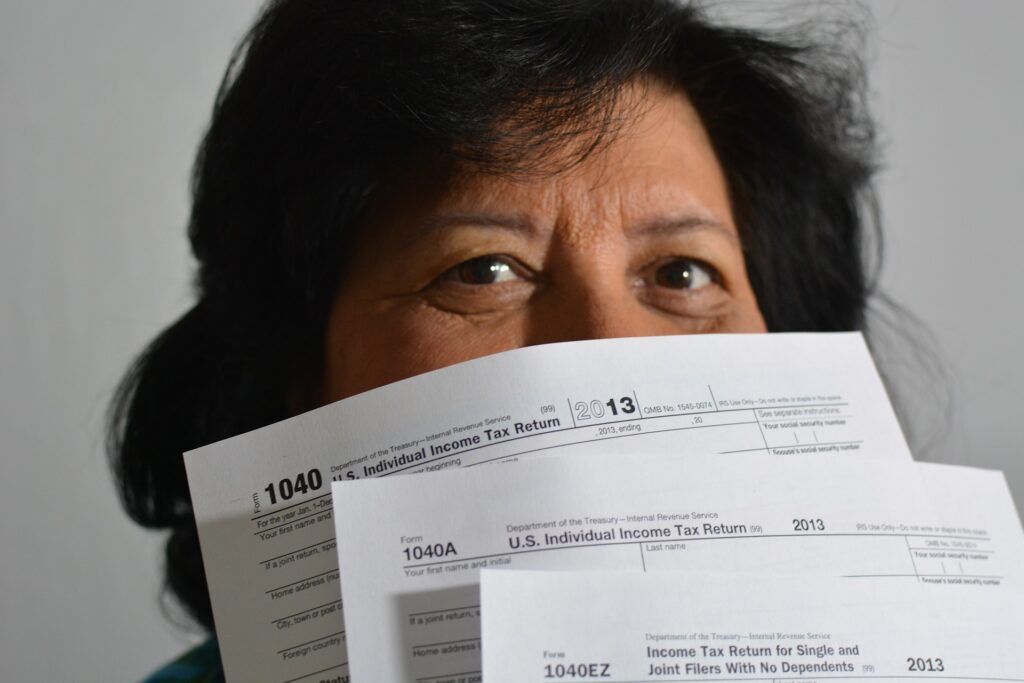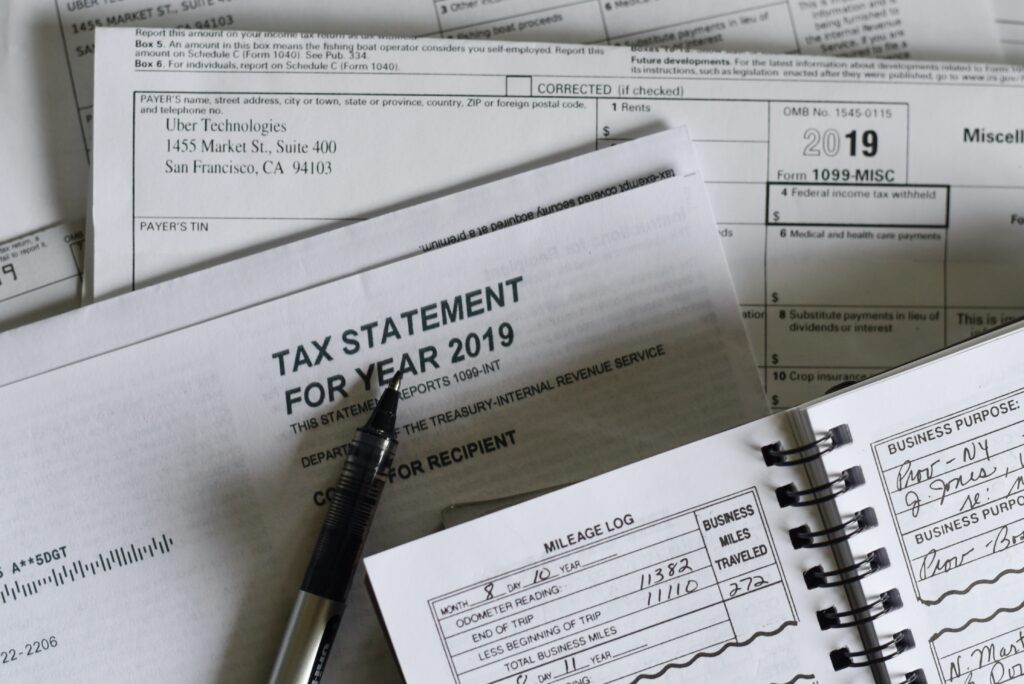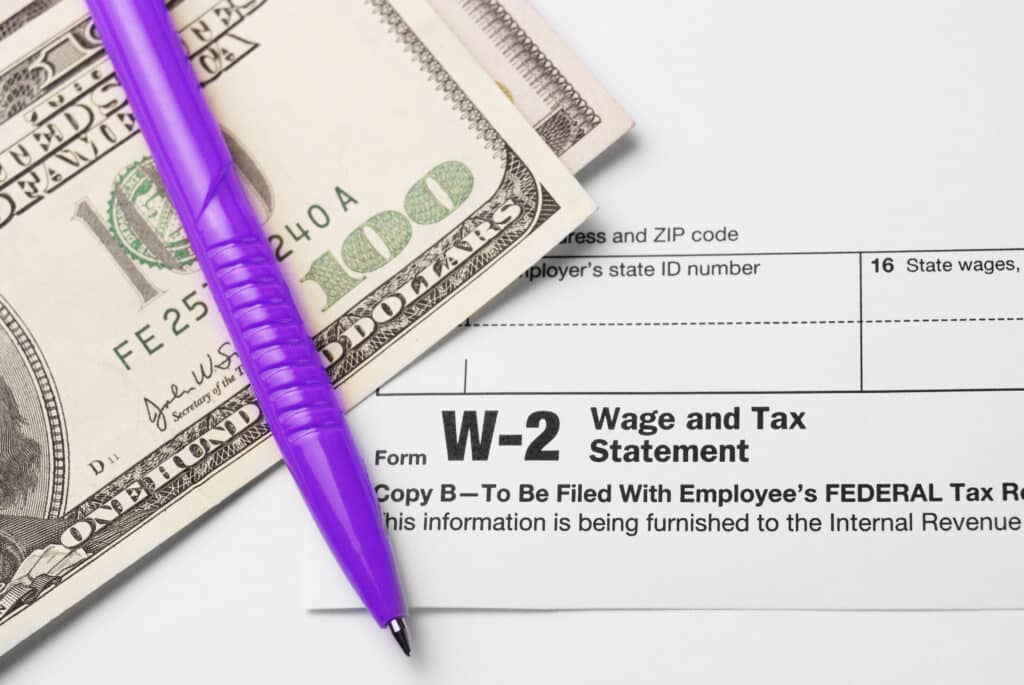Post Summary
- Immigrants must file federal (and possibly state) taxes if income thresholds are met.
- Options include IRS direct filing, IRS Free File, and third-party services.
- Deadline typically April 15; free online filing available for eligible individuals.
Last updated on June 19th, 2024 at 07:44 pm
If you’re new to the United States, you’ve got a lot on your plate, from housing to employment to how to get a social security card. It can be overwhelming. Then, add to that list this daunting question: How and where do I file my taxes?
In this Remitly guide, we’ll explain six popular options for where to file your taxes.

Do I need to pay federal taxes as an immigrant?
First, you need to know that, as a temporary or permanent resident of the United States, you are subject to the U.S. federal tax code, just like a citizen. This means that, yes, you’ll likely need to file a federal tax return.
In most states, you are also subject to state income tax.
That means you do need to file your taxes if you’re an immigrant, as long as you have earned enough money in the previous year. (As of the 2021 tax year, the threshold was $12,550 for most single taxpayers or $25,100 for most spouses filing jointly.)
Fortunately, in addition to filing directly through the IRS (Internal Revenue Service), you have many options for user-friendly third-party solutions to help you with the filing process. Many of them have free versions, and with these tools, you can file all of your taxes online.
The IRS
While plenty of third-party options are out there, you can bypass all of them and file directly through the IRS using a paper form 1040 (U.S. Individual Income Tax Return). This method, however, is the slowest and will require you to wait the longest to receive any refund you might be owed.
If you, like most Americans, would rather file your taxes online, you have three free options.
- Fillable forms (for any income) directly through the IRS, to be filled out on your own with limited guidance and calculations.
- IRS Free File, a new service that lets you file your taxes online and perform limited calculations automatically. You can access the service here.
- Guided tax preparation through a public-private partnership, where you choose an offer from a third party. You can use the third-party system to file your taxes for free if you meet the criteria (including an adjusted gross income of $73,000 or less).
If you don’t qualify for free third-party filing and don’t want to fill out the IRS’s free forms, you can pay to use any of the programs described below.
TurboTax
TurboTax is one of the most popular commercial tax software options in the United States and is known for advertising the biggest refund.
As with most tax prep companies, TurboTax allows you to file with or without professional support. You can print and mail your forms, or you can file online for a fee. If you qualify, you can file federal returns online for free.
TurboTax gives you three options:
- Do your own taxes with the system’s step-by-step process and help text
- Add live expert help as you file
- Allow TurboTax to do your taxes for you
If you want to do your own taxes, you’ll have a price range of $0 to $89, depending on your needs. You’ll receive text-based guidance through simple questions as you fill out your forms, but no live help.
If you want some expert help, the fees range from $0 to $209. You’ll get on-demand access to experts when you have questions or problems, and TurboTax provides a full year of tax advice after you file.
Finally, the easiest path is to have TurboTax file for you. This is the most expensive option, costing up to $409, but it might be your best option if you’re busy or overwhelmed.
TaxSlayer
TaxSlayer is another popular option for first-time tax filers. It even offers a free app. TaxSlayer’s options include:
- Simply Free ($0 if you qualify)
- Classic (most popular, $22.95)
- Premium ($42.95)
- Self-employed ($52.95)
The Simply Free option is available if your tax situation is simple. This might be for you if you feel confident in gathering your tax forms and following on-screen prompts.
The classic option provides guidance when you get stuck. It also includes deductions and credits and provides all the forms you need to maximize your refund.
The premium option takes it to the next level by offering help from live tax experts. You’ll receive immediate access to assistance when you need it.
Finally, the self-employment option is for those who work for themselves.

TaxAct
TaxAct can also serve your tax filing needs. Like TaxSlayer, it provides four options:
- Free (if you qualify)
- Deluxe (most popular, $29.99)
- Premier ($49.99)
- Self-employed ($69.99)
The free version gets you the basic features, including the ability to report unemployment income and file for child tax credits.
The free version gets you the basic features, including the ability to report unemployment income and file for child tax credits.
The deluxe option has all the features of the free option but allows you to claim several more deductions and credits, such as child and dependent care and mortgage interest.
The premier version builds on the more basic options, allowing you to report more types of income, such as rental property or the sale of a home.
Finally, the self-employment version gives you everything you need to file your combined personal and business taxes, including a deduction maximizer and year-round planning resources.
H&R Block
H&R Block is a major player in the tax filing space. Like other tax services, it offers a range of packages for federal tax filing:
- Free (if you qualify)
- Deluxe ($35)
- Premium ($89)
- Self-Employed ($85)
The free service is for those with simple and straightforward tax situations who meet the qualifications.
The Deluxe program adds support for homeowners, childcare expenses, and student loans.
At the premier level, you can report on investments, home sales, and rental properties.
The Self-Employment level is aimed at freelancers, contractors, and business owners.
In most cases, H&R Block guarantees to reimburse you for fees and penalties if one of its tax professionals makes an error.

Private tax professionals
Online tax preparation through one of the tax software programs listed above is one way to file taxes in the U.S.
Another option is to have a tax pro in your local area do the work for you. Local tax experts can include tax preparer professionals and certified public accountants.
Although they can prepare taxes for anyone, tax professionals are often most helpful for individuals with complex tax situations. For example, you may benefit from one if you own a small business or have multiple retirement accounts.
Some tax experts also offer tax planning services to help you reduce your tax liabilities and maximize your deductions.
Rates for tax experts vary, and many charge by the hour. Search for “tax professionals near me” and contact a few pros to compare rates.
What about state and local taxes?
So far, we’ve focused on filing your federal tax return, but you may have other tax obligations for local and state taxes.
Most online tax preparation services will also allow you to e-file your state taxes, but you may need to pay an additional fee for state tax preparation.
In most places, you can also file local taxes online. However, you will usually need to do so directly through the tax collector or tax office’s website.
FAQs about federal tax returns
Because taxes can be an overwhelming topic for many immigrants, we wanted to answer some common questions about tax returns.
Can you file taxes for free online?
Yes, you can file your taxes for free online. As outlined above, you can do so through the IRS free file and some third-party tax preparer services.
When is the filing deadline?
The tax filing deadline varies from year to year. While federal taxes must generally be filed and paid by April 15, the IRS may change the date if the 15th falls on a weekend or holiday.
Normally, state taxes are due at the same time, but you should check with your state’s Department of Revenue for specific deadlines.
How will I receive my tax refund?
There are two main ways to receive a tax refund. Most people prefer to receive their refund by direct deposit to a bank account, such as a checking or savings account. If you don’t provide bank account information for direct deposit, the IRS will send you a paper check in the amount of your tax refund.
Some third-party tax preparer services will also allow you to obtain your refund through a prepaid card that works like a debit or gift card, but this is less common.
How do I compare filing options?
To compare filing options, start by looking at the fees and what you get for each level of service. Then, think about how comfortable you are completing your taxes yourself to determine if you would benefit from the assistance of live tax experts.
Reading online reviews can also help you compare your options. Seeing what real customers are saying about providers can give you a feel for how easy they make it to file your tax return and how good their customer service is.
What does the term last year’s AGI mean?
If you file your taxes electronically, you may be asked to enter last year’s AGI as a security measure.
AGI stands for adjusted gross income and represents how much money you made the year before. You can find this number on Line 11 of Form 1040 in last year’s tax return.
Where can I get tax help?
If you need assistance with your tax return, local tax pros are one option. You can also contact the IRS. Visit their website for current contact information.
How do I pay my taxes if I e-file?
If you owe money on your taxes, you can submit payment when you electronically file by providing your routing and bank account number or via debit or credit card.
